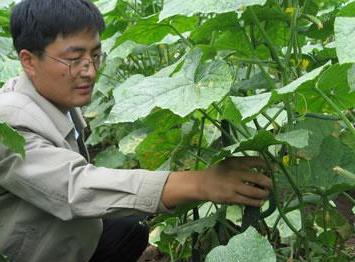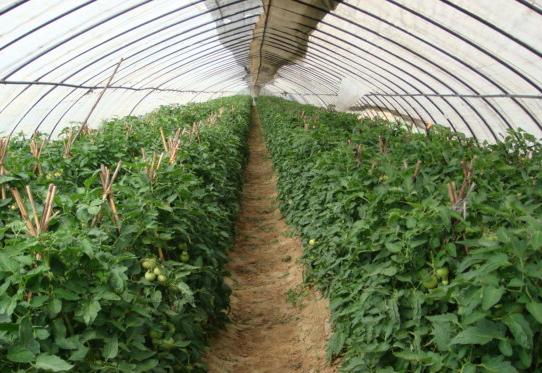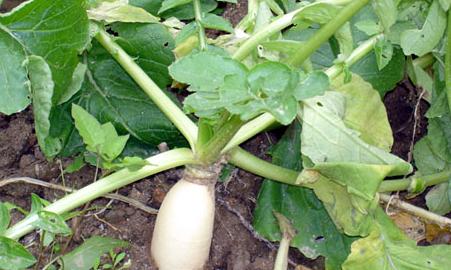Flower planting
In the contemporary society with developed material and spirit, are there many people who cultivate their sentiments by growing flowers? Today, the editor will introduce flower planting to you.

First of all, let's introduce how to cultivate and manage Pinus tabulaeformis.
Pinus tabulaeformis belongs to Pinus family and is an evergreen tree. The crown is tower-shaped or wide-ovate in adulthood and discoid or umbrella-shaped in old age. The root system is well developed and it is a deep-rooted tree species. Bark gray-brown, scaly dehiscence. Branchlets stout glabrous, yellow-brown. Winter buds oblong, brown. Leaves needle-shaped, usually in a bunch of three needles, emerald green, the base of the leaf is surrounded by leaf sheaths. Monoecious, male cones orange-yellow, female flowers light purple. The cone is ovoid, sessile, green at first, yellowish brown when ripe, and does not fall on the persistent branch for several years. Seeds ovate, light brown, variegated.
Pinus tabulaeformis is a strong positive tree species, like light, cold tolerance, drought tolerance, fear of waterlogging, avoid poor drainage of clayey soil. It is a temperate coniferous tree species with North China as the distribution center. Prefer neutral and slightly acidic upper soil, not resistant to salt and alkali. In the clayey soil, the top is capped early, the shoot is easy to dry, and the life is shorter. Pinus tabulaeformis grows slowly in the juvenile stage, begins to divide lateral branches after 3 years, and grows faster after 4 ~ 5 years. Sprouts only once a year. The peak period of growth is at the end of spring and the beginning of summer, and generally stops growing at the end of May. Grow again after autumn, increase coarseness. In mid-October, some perennials began to fall off, and pine trees stopped growing in mid-November.

Potted Pinus tabulaeformis should be placed in a sunny and well-ventilated place. In winter, you can spend the winter in the leeward and sunny place. it can withstand a low temperature of-25 ℃, but the flowerpot should be protected by soil to prevent frost cracking. Pinus tabulaeformis should not be watered too much, spring dry can be watered once every 2 or 3 days, in summer to prevent stagnant water, in order to avoid waterlogging. Cold water should be fully watered in November and is usually not watered in winter. Pinus tabulaeformis is resistant to barren and does not like big fertilizer. Generally apply base fertilizer, dry fertilizer can be applied in spring, organic fertilizer or humic acid is better.
The following editor is going to introduce the propagation and cultivation of Begonia angustifolia.
Toad leaf begonia, also known as Wang begonia, hairy leaf begonia, is a perennial evergreen herbaceous foliage plant of begonia family. Its leaves have gorgeous rainbow markings, gorgeous but not vulgar, gorgeous and dignified, extremely beautiful, is the most characteristic cultivation species of begonia, but also an important shade potted foliage plant. Its cultivation is more popular and is loved by people all over the world, especially in some countries in Europe and the United States. Can be used for small and medium pot planting, can also be used as hanging orchid planting in the living room, study or bedroom, or with other plants as a landscape box planting, used for interior decoration and beautification.
Morphological features: no aboveground stem, underground rhizome recumbent growth. Ye Jisheng, one side oblique, dark green, with silver markings on it. The flowers are reddish and the florescence is longer.
Reproduction and cultivation: using the method of cutting and sowing, applying light fertilizer once every 10 days in the growing season, should pay attention to timely heart extraction, poor ventilation in summer, vulnerable to whitefly.

Cultivation techniques: in order to meet the above ecological requirements, potted plants in the north can be placed on the north balcony or under the eaves of the corridor or on the windowsill of the north room from early May to early October, but pay attention to ventilation. In dry weather and summer, spray water on the ground around the flowerpot several times a day, humidify and cool, and maintain a cool and humid environment, which is extremely important for its healthy growth. High temperature drying can easily lead to poor growth and even death of plants. To cultivate begonia with toad leaves, do not spray unclean water on the leaves, otherwise it is easy to produce disease spots and affect the outlook. The growing season should not be watered too much, so it is appropriate to keep the basin soil moist. Compound fertilizer or thin pancake fertilizer and water based on nitrogen fertilizer are applied about once every half a month in the peak growing season. When fertilizing, you should be careful not to let the fertilizer liquid defile the leaves. If you accidentally stain the leaves with the fertilizer solution, you should immediately wash the leaf surface with clean water and rinse the fertilizer solution clean. Move to the sunny part of the south-facing room in winter, cover with plastic film cover to keep warm and moisturize at night, spray and wash the leaves with water similar to room temperature every 5 days or so, so as to avoid dust or smoke contamination and keep the leaves fresh and bright. During the overwintering period, the room temperature should be kept above 10 ℃. Stop fertilizing and control watering to survive the winter safely. Generally speaking, the plant of Oviductus Ranae is weakening after growing for 4 years, so it is appropriate to renew it by leaf insertion every 4-5 years.

Propagation method: the leaf of Toad leaf begonia is huge, the leaf vein is stout, and the regeneration ability is strong. Cutting the leaf vein can stimulate it to produce adventitious buds and adventitious roots, so the leaf insertion method can be used to propagate flower seedlings. Use a shallow basin with a large mouth as an insert container, wash it clean and put it into the fried pure flour sand, and soak the flour sand with the basin bottom water supply method.
Select large mature leaves as materials, cut the veins on the back of the leaves with sterilized blades, the knife distance is 2-3 cm, deep into the veins. Then place the leaf face up on the wet sand, insert the petiole into the wet sand, press the leaf surface with a broken glass block, and finally cover the basin with glass, but not tightly. At room temperature of 20-24 ℃ for 20 days, the leaf vein cut to produce callus, and after 35 days, young roots and leaves could grow, so the glass should be removed and ventilated.
After the leaflet unfolds, the main vein between the seedlings is cut off, the seedlings are divided into pots, some dilute liquid fertilizer is applied one month later, and it can blossom the next year.

Next, the editor will introduce the cultivation and management of blue mustard.
Growth habits: strong adaptability. Under the condition of full light to slightly overcast, it is easy to grow in moderately moist and well drained soil. It is best to plant in partial shade in a hot summer climate. Through a large number of self-sowing reproduction, it can be retained in the planting site for many years. It blossoms luxuriantly in the spring of the following year and works well, especially with other flowers and plants that bloom at the same time, such as cow's eye chrysanthemum. Timely removal of withered flowers and stems can make the second season bloom luxuriantly.
Reproduction and cultivation: due to the short growing period, it can be sown many times in spring or autumn to prolong the viewing period. The root base is lignified and maintained for many years, which can sprout new buds on the propagating tuberous roots and continue to blossom in the second and subsequent seasons. But sowing and reproduction are the most ideal. Sowing is the most ideal in Jiangsu, Zhejiang and Shanghai from August to September. Although it can also reproduce by itself, the overall effect may not be very good. It can only be used in rough and natural landscape areas. There are no serious diseases and insect pests.
Blue mustard bright and fresh blue is very rare in spring flower species. It is an excellent natural site, road slope and courtyard plant, and can also be used as a flower border.
Propagation method: the leaf of Toad leaf begonia is huge, the leaf vein is stout, and the regeneration ability is strong. Cutting the leaf vein can stimulate it to produce adventitious buds and adventitious roots, so the leaf insertion method can be used to propagate flower seedlings. Use a shallow basin with a large mouth as an insert container, wash it clean and put it into the fried pure flour sand, and soak the flour sand with the basin bottom water supply method.
Select large mature leaves as materials, cut the veins on the back of the leaves with sterilized blades, the knife distance is 2-3 cm, deep into the veins. Then place the leaf face up on the wet sand, insert the petiole into the wet sand, press the leaf surface with a broken glass block, and finally cover the basin with glass, but not tightly. At room temperature of 20-24 ℃ for 20 days, the leaf vein cut to produce callus, and after 35 days, young roots and leaves could grow, so the glass should be removed and ventilated.
After the leaflet unfolds, the main vein between the seedlings is cut off, the seedlings are divided into pots, some dilute liquid fertilizer is applied one month later, and it can blossom the next year.

Next, the editor will introduce the cultivation and management of blue mustard.
Growth habits: strong adaptability. Under the condition of full light to slightly overcast, it is easy to grow in moderately moist and well drained soil. It is best to plant in partial shade in a hot summer climate. Through a large number of self-sowing reproduction, it can be retained in the planting site for many years. It blossoms luxuriantly in the spring of the following year and works well, especially with other flowers and plants that bloom at the same time, such as cow's eye chrysanthemum. Timely removal of withered flowers and stems can make the second season bloom luxuriantly.
Reproduction and cultivation: due to the short growing period, it can be sown many times in spring or autumn to prolong the viewing period. The root base is lignified and maintained for many years, which can sprout new buds on the propagating tuberous roots and continue to blossom in the second and subsequent seasons. But sowing and reproduction are the most ideal. Sowing is the most ideal in Jiangsu, Zhejiang and Shanghai from August to September. Although it can also reproduce by itself, the overall effect may not be very good. It can only be used in rough and natural landscape areas. There are no serious diseases and insect pests.
Blue mustard bright and fresh blue is very rare in spring flower species. It is an excellent natural site, road slope and courtyard plant, and can also be used as a flower border.
Related
- Wuhan Hospital Iron Tree Blooming Result Was Instantly Frightened by the Gardener Master
- Which variety of camellia is the most fragrant and best? Which one do you like best?
- What is the small blue coat, the breeding methods and matters needing attention of the succulent plant
- Dormancy time and maintenance management of succulent plants during dormancy
- Minas succulent how to raise, Minas succulent plant pictures
- What are the varieties of winter succulent plants
- How to raise succulent plants in twelve rolls? let's take a look at some experience of breeding twelve rolls.
- Attention should be paid to water control for succulent plants during dormant period (winter and summer)
- Watering experience of twelve rolls of succulent plants
- Techniques for fertilizing succulent plants. An article will let you know how to fertilize succulent plants.



